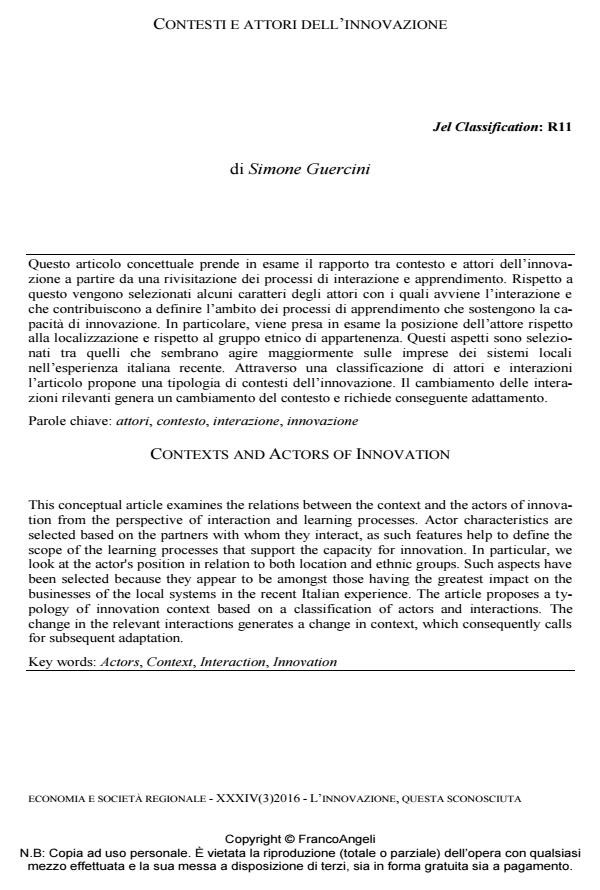Contesti e attori dell’innovazione
Titolo Rivista ECONOMIA E SOCIETÀ REGIONALE
Autori/Curatori Simone Guercini
Anno di pubblicazione 2017 Fascicolo 2016/3
Lingua Italiano Numero pagine 17 P. 84-100 Dimensione file 322 KB
DOI 10.3280/ES2016-003006
Il DOI è il codice a barre della proprietà intellettuale: per saperne di più
clicca qui
Qui sotto puoi vedere in anteprima la prima pagina di questo articolo.
Se questo articolo ti interessa, lo puoi acquistare (e scaricare in formato pdf) seguendo le facili indicazioni per acquistare il download credit. Acquista Download Credits per scaricare questo Articolo in formato PDF

FrancoAngeli è membro della Publishers International Linking Association, Inc (PILA)associazione indipendente e non profit per facilitare (attraverso i servizi tecnologici implementati da CrossRef.org) l’accesso degli studiosi ai contenuti digitali nelle pubblicazioni professionali e scientifiche
Questo articolo concettuale prende in esame il rapporto tra contesto e attori dell’innovazione a partire da una rivisitazione dei processi di interazione e apprendimento. Rispetto a questo vengono selezionati alcuni caratteri degli attori con i quali avviene l’interazione e che contribuiscono a definire l’ambito dei processi di apprendimento che sostengono la capacità di innovazione. In particolare, viene presa in esame la posizione dell’attore rispetto alla localizzazione e rispetto al gruppo etnico di appartenenza. Questi aspetti sono selezionati tra quelli che sembrano agire maggiormente sulle imprese dei sistemi locali nell’esperienza italiana recente. Attraverso una classificazione di attori e interazioni l’articolo propone una tipologia di contesti dell’innovazione. Il cambiamento delle interazioni rilevanti genera un cambiamento del contesto e richiede conseguente adattamento.
Parole chiave:Attori, contesto, interazione, innovazione
Simone Guercini, Contesti e attori dell’innovazione in "ECONOMIA E SOCIETÀ REGIONALE " 3/2016, pp 84-100, DOI: 10.3280/ES2016-003006